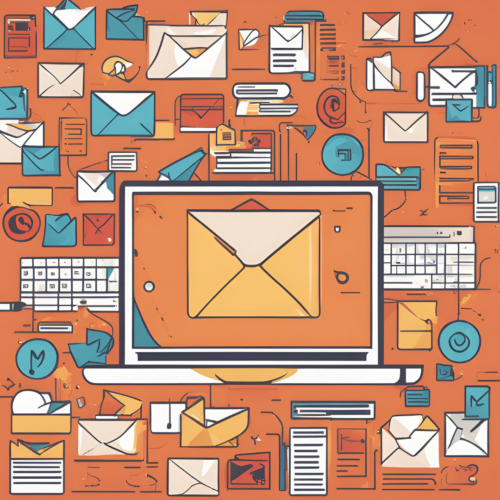Hey there! So, you’ve got something important to communicate, whether it’s reaching out for a job, networking, or just trying to impress your colleagues. In today’s digital age, sending the perfect professional email is crucial. Don’t worry; I’ve got you covered! In this post, we’ll dive into the nitty-gritty of crafting an email that screams “I mean business!” while also maintaining a casual tone that feels approachable. So grab a cup of coffee, and let’s get started!
1. Start with the Right Email Address
First things first, let’s talk about email addresses. Your email address speaks volumes about you, so make it count! Ideally, your email should be a combination of your name and perhaps a professional domain (think youremail@gmail.com or yourname@yourbusiness.com). Avoid anything that sounds childish or unprofessional (sorry, “partyboy1990@gmail.com” just won’t cut it). Using your name or a variation of it gives a good impression right off the bat.
Quick Tip:
If you have a common name, consider adding your middle initial or a number that isn’t a birthday (no one wants to guess your age!).
2. Nail the Subject Line
Your subject line is like the headline of a news article—it has to grab attention, but it also needs to convey what the email is about. Keep it concise and to the point. If you’re applying for a position, include the job title. If you’re reaching out for a quick chat, your subject could be something like, “Quick Question About [Topic].”
Examples:
- “Application for Marketing Coordinator Position”
- “Following Up on Our Last Conversation”
- “Networking: Coffee Chat Request”
3. Greet the Recipient Properly
Starting strong is essential. Always address the recipient by their name. If it’s a formal email, use a title, like “Mr.,” “Ms.,” or “Dr.” (and please spell their name correctly). If you’re unsure of the person’s gender or title, a friendly “Hello [First Name]” works just fine in most business environments.
Example:
- “Dear Dr. Smith,”
- “Hello Janet,”
- “Hi Team,” (if you’re emailing a group)
4. Open with a Warm Introduction
Once you’ve gotten past the greetings, it’s time to start off on the right foot. A little small talk can go a long way in establishing rapport. Ask how they’re doing, reference a recent event (like a project completion), or mention a connection, if applicable. This shows that you’re not just diving straight into your ask, but that you value their relationship.
Example:
- “I hope this email finds you well! I really enjoyed our meeting last week and appreciated the insights you shared about the marketing strategy.”
5. Get to the Point
Now that you’ve eased into the conversation, it’s time to get down to business. Be clear and concise about what you need, whether it’s information, assistance, or feedback. Use short paragraphs and bullet points if necessary to keep things organized. Remember, busy people appreciate brevity!
Example:
“I am writing to inquire about the status of my job application for the Marketing Coordinator position I submitted last week. If you could share any updates or the timeline for the hiring process, I would greatly appreciate it.”
6. Be Polite and Professional
This one’s a no-brainer, but it’s essential to maintain a level of politeness throughout your email. Use “please” and “thank you” generously. Avoid slang or overly casual language. Remember, while you want to be approachable, it’s critical to showcase your professionalism.
Example:
“I would greatly appreciate any guidance you can offer regarding this matter. Thank you for your time!”
7. Include a Clear Call to Action
If you’re requesting something specific or need a response, make it abundantly clear. A simple “Could you please get back to me by [specific date]?” gives the recipient a clear deadline and makes your request straightforward.
Example:
“Could you let me know your availability for a brief call next week? I would love to discuss this further and get your thoughts.”
8. End on a Positive Note
Wrap it up with a friendly closing line that invites a response, such as, “Looking forward to hearing from you!” or “Thanks in advance for your help!” This leaves the conversation open and helps establish a welcoming tone.
Example:
“Thank you again, and I appreciate your assistance with this!”
9. Choose an Appropriate Sign-Off
Your sign-off is just as important as your greeting. Depending on the formality of your email, you can choose from a variety of options. “Best regards,” “Sincerely,” or “Warm regards” are staples for professional emails. If you have established a friendly rapport, “Cheers” or “Talk soon” can also work.
Examples:
- “Best regards,”
- “Sincerely,”
- “Warm regards,”
10. Proofread, Proofread, Proofread
Last but definitely not least, take a minute (or five) to proofread your email before hitting send. Typos, grammatical errors, and awkward phrasing can make you look unprofessional and can create confusion. Tools like Grammarly or even a simple spell check can help catch those pesky errors.
Quick Tip:
Read your email out loud to ensure it sounds smooth and makes sense!
Wrapping It Up
And there you have it, folks! Crafting a professional email doesn’t have to be a daunting task. With the right tools and mindset, you can create an email that effectively communicates your message while also reflecting your personality. Remember to keep it brief, polite, and professional, and you’ll be on your way to impressing whoever is on the other end of the screen.
So next time you hit that “Compose” button, take a deep breath, follow these tips, and write like the professional you are. Happy emailing!
